This article was co-authored by Navid Malakouti, MD, FAAD. Dr. Navid Malakouti is a Board Certified Dermatologist specializing in cosmetic dermatology, dermatologic surgery, and medical dermatology. He treats patients of all ages for conditions like acne, rosacea, psoriasis, skin cancer, botox, fillers, lasers, and chemical peel. Dr. Malakouti is a Diplomate of the American Board of Dermatology, Fellow of American Academy of Dermatology, American Society for Dermatologic Surgery, and American Society for Laser Medicine and Surgery, and a member of the Skin of Color Society. He holds a BS in Biochemistry and Cell Biology from The University of California, San Diego and an MD from The Virginia Commonwealth University School of Medicine. He completed his Dermatology residency in Washington D.C. at Howard University, VA Medical Center, Children's National Hospital, and the National Institutes of Health.
There are 8 references cited in this article, which can be found at the bottom of the page.
wikiHow marks an article as reader-approved once it receives enough positive feedback. In this case, 80% of readers who voted found the article helpful, earning it our reader-approved status.
This article has been viewed 180,464 times.
Do you have dry, tight and sensitive skin on your face? Does it feel uncomfortably dried out, and look flaky and sometimes red, itchy and sore? Then your skin type is dry. Whether you have always had dry skin, or it's the winter weather or harsh skincare products that have caused this, there's no need to worry. By simply developing a quick skin care routine, to help dry skin from the inside and out, your skin will feel great and be moisturized but not oily in no time.
Steps
Mornings
-
1Give your face a quick splash with warm water, just to freshen up and open your sleepy eyes.
-
2Use a gentle moisturising cleanser, specialized for dry and sensitive skin types. Choose a natural one, or one that (as well as being moisturising) has no harsh chemicals in it. Cream or gel cleansers work best. Massage the cleanser into wet skin, and follow the instructions on the product, before rinsing off with warm water.[1]Advertisement
-
3Don't use a toner because they can dry you out and water is actually a better alternative. The purpose of toner is to help create "moisture" that your moisturizer can then "seal in". You will see better results if you replace your toner with a serum.
- Use rose water as an alternative.
-
4
-
5Use sun cream. Make sure your sunscreen is broad-spectrum (protects from UVA and UVB rays). This helps protect your skin, and if you choose a moisturising cream for dry and sensitive skin, it will also help keep your skin hydrated throughout the day.[4]
- Pick a product with at least 20 SPF and preferably water resistance.[5]
-
6Opt for a tinted moisturiser instead, or a mineral foundation for dry skin if you like to wear foundation. Only apply a little, but if you need an extra cover-up, use concealer or highlighter.
During the Day
-
1Go to the bathroom quickly at your morning break time and apply another thin layer of the moisturiser you used in the morning. Again, massage it in thoroughly, and pay special attention to dry patches. Make sure your moisturiser is oil-free, and if your skin still feels moisturised and hydrated before morning break, then skip this step.
-
2Take the time to apply a good lip balm or butter (The Body Shop do great ones!) while you're in the bathroom. If you still like to wear lipstick and gloss as well, then apply a good layer of the balm before, and then use your lipstick/gloss/colour on top.[6]
-
3Buy a big bottle of water at this time. Drinking water re-hydrates the skin from the inside, and even if you already have a drink with you, some extra liquid won't do any harm. A large drink will last you throughout the day.[7]
-
4Grab another drink at midday (as you ought to drink at least 2 litres of water each day), and get a healthy lunch. Water-based fruit and veg are recommended to help dry skin, as well as fruit and veg rich in antioxidants and vitamin A, B, and C. A couple of ideas are to bring in a vegetable soup, and a fruit salad for dessert, or maybe a healthy salad, a couple of pieces of fruit and some yogurt?
-
5Go to the bathroom again before you go back to work/school/jobs etc after lunch. You may want to top up on some moisturiser or sunscreen.
-
6Eat healthily, drink loads, and keep on top of your dry skin by moisturising all the time during the rest of the day.
Before Bed
-
1Start by getting your self a healthy supper that will help your dry skin. Try a glass of milk with some strawberries.
-
2Splash your face with some lukewarm water, before using a gentle make-up remover. Make sure it's for sensitive or dry skin, as well as being effective.[8]
-
3Use the same gentle cleanser as the one used in the mornings, Again, massage it in before rinsing off. You can then use rose water again now if you want.
-
4Use a thick creamy moisturiser, or a rich night cream. Using one of these will soak in during the night, and nourish it while you sleep, leaving your skin feeling more moisturised in the morning. Apply a good layer, paying special attention to dryer areas.
-
5Take yourself off to bed and put a bottle of water in reach.
Once a Week
-
1Use an exfoliator to clean pores and to remove dead skin cells weekly of you have oily or combination skin. But for people with dry skin, exfoliators can be harsh and drying for the skin. Instead, just gently massage your skin in circular motions with a washcloth to remove dead skin cells before using your daily gentle cleanser and moisturiser.[9]
-
2Feel free to use a face mask once a week regardless of your skin type. For dry skin, look up homemade face mask recipes or buy a hydrating, moisturising and preferably natural one (Lush have great face masks for all the different skin types!). Common ingredients for homemade face masks for dry skin can include honey, oils, bananas, yogurt, milk and sometimes butter and chocolate.
-
3With this routine, your skin should be much better in no time. Plus, you'll be getting the benefit of eating healthily if you eat some of the foods mentioned to help dry skin!
Weekly Skincare Routine for Dry Skin
Expert Q&A
-
QuestionHow do I treat dry skin daily?
 Navid Malakouti, MD, FAADDr. Navid Malakouti is a Board Certified Dermatologist specializing in cosmetic dermatology, dermatologic surgery, and medical dermatology. He treats patients of all ages for conditions like acne, rosacea, psoriasis, skin cancer, botox, fillers, lasers, and chemical peel. Dr. Malakouti is a Diplomate of the American Board of Dermatology, Fellow of American Academy of Dermatology, American Society for Dermatologic Surgery, and American Society for Laser Medicine and Surgery, and a member of the Skin of Color Society. He holds a BS in Biochemistry and Cell Biology from The University of California, San Diego and an MD from The Virginia Commonwealth University School of Medicine. He completed his Dermatology residency in Washington D.C. at Howard University, VA Medical Center, Children's National Hospital, and the National Institutes of Health.
Navid Malakouti, MD, FAADDr. Navid Malakouti is a Board Certified Dermatologist specializing in cosmetic dermatology, dermatologic surgery, and medical dermatology. He treats patients of all ages for conditions like acne, rosacea, psoriasis, skin cancer, botox, fillers, lasers, and chemical peel. Dr. Malakouti is a Diplomate of the American Board of Dermatology, Fellow of American Academy of Dermatology, American Society for Dermatologic Surgery, and American Society for Laser Medicine and Surgery, and a member of the Skin of Color Society. He holds a BS in Biochemistry and Cell Biology from The University of California, San Diego and an MD from The Virginia Commonwealth University School of Medicine. He completed his Dermatology residency in Washington D.C. at Howard University, VA Medical Center, Children's National Hospital, and the National Institutes of Health.
Board Certified Dermatologist Those prone to dry skin should limit excessive washing, take cool short showers, and apply moisturizing creams.
Those prone to dry skin should limit excessive washing, take cool short showers, and apply moisturizing creams. -
QuestionHow do you hydrate your skin?
 Navid Malakouti, MD, FAADDr. Navid Malakouti is a Board Certified Dermatologist specializing in cosmetic dermatology, dermatologic surgery, and medical dermatology. He treats patients of all ages for conditions like acne, rosacea, psoriasis, skin cancer, botox, fillers, lasers, and chemical peel. Dr. Malakouti is a Diplomate of the American Board of Dermatology, Fellow of American Academy of Dermatology, American Society for Dermatologic Surgery, and American Society for Laser Medicine and Surgery, and a member of the Skin of Color Society. He holds a BS in Biochemistry and Cell Biology from The University of California, San Diego and an MD from The Virginia Commonwealth University School of Medicine. He completed his Dermatology residency in Washington D.C. at Howard University, VA Medical Center, Children's National Hospital, and the National Institutes of Health.
Navid Malakouti, MD, FAADDr. Navid Malakouti is a Board Certified Dermatologist specializing in cosmetic dermatology, dermatologic surgery, and medical dermatology. He treats patients of all ages for conditions like acne, rosacea, psoriasis, skin cancer, botox, fillers, lasers, and chemical peel. Dr. Malakouti is a Diplomate of the American Board of Dermatology, Fellow of American Academy of Dermatology, American Society for Dermatologic Surgery, and American Society for Laser Medicine and Surgery, and a member of the Skin of Color Society. He holds a BS in Biochemistry and Cell Biology from The University of California, San Diego and an MD from The Virginia Commonwealth University School of Medicine. He completed his Dermatology residency in Washington D.C. at Howard University, VA Medical Center, Children's National Hospital, and the National Institutes of Health.
Board Certified Dermatologist The most important thing to remember when dealing with dry skin is to moisturize, moisturize, moisturize! Those with very dry skin would benefit from thicker cream moisturizers containing ceramics.
The most important thing to remember when dealing with dry skin is to moisturize, moisturize, moisturize! Those with very dry skin would benefit from thicker cream moisturizers containing ceramics. -
QuestionCan I use two different types of facial cleansers in a day?
 Community AnswerYou can, but shouldn't because it isn't needed and is not beneficial. It may even be making your dry skin worse. It's always best to use a daily moisturizer with an SPF of at least 20 UVA/UVB in the morning. Try finding a gentle exfoliating scrub to clean your face and neck morning and night. A gentle cleanser such as Cetaphil is great for daily washing.
Community AnswerYou can, but shouldn't because it isn't needed and is not beneficial. It may even be making your dry skin worse. It's always best to use a daily moisturizer with an SPF of at least 20 UVA/UVB in the morning. Try finding a gentle exfoliating scrub to clean your face and neck morning and night. A gentle cleanser such as Cetaphil is great for daily washing.
Warnings
- If you know that a particular brand or product irritates your skin in any way, then don't use it at all.⧼thumbs_response⧽
- Do you have dry patches on your skin, but also oily areas? Or do you have dryer cheeks and an oily T-zone, prone to spots? Then you have combination skin. Instead of following this routine, look up routines for combination skin, as some of this routine for dry skin may be too moisturising for oily areas.⧼thumbs_response⧽
- Read the ingredients on the back of all moisturizers, cleanser, lip balms, etc, to make sure you aren't allergic to any of the ingredients. If you are, don't use the product!⧼thumbs_response⧽
- Do the same for sensitive skin (which is very dry, becomes inflamed and gets irritated easily, is itchy and often red and sore), and normal skin (which manageable and balanced).⧼thumbs_response⧽
- Alternatively, if you have oily skin, look up routines for that skin type to develop some great ways on how to manage with it.⧼thumbs_response⧽
- If your skin is really dry and doesn't seem to be improving, you might have a skin condition such as eczema. See your doctor.⧼thumbs_response⧽
- When applying any cream, cleanser, balm, etc to your skin, be careful to avoid your eyes and hairline. If the product isn't for the lips, avoid your lips as well when applying.⧼thumbs_response⧽
- You will be very impressed with the results if you follow this routine!⧼thumbs_response⧽
- If you are allergic to any foods mentioned, do not make, eat or drink them.⧼thumbs_response⧽
- Not sure if a product will irritate your skin? Do a patch test by simply applying a little of the product on the back of your wrist. Leave for quite a long time, and if the area becomes irritated, red, itchy or sore in any way, wash it all of, discontinue use, throw the product in the bin, and certainly do NOT put the product anywhere near your skin again, or anywhere near your face!⧼thumbs_response⧽
- Remember to follow all instructions carefully on the product you'll be using.⧼thumbs_response⧽
References
- ↑ https://www.webmd.com/beauty/glowing-skin-18/slideshow-skincare-routine
- ↑ Navid Malakouti, MD, FAAD. Board Certified Dermatologist. Expert Interview. 19 July 2021.
- ↑ https://www.aad.org/public/skin-hair-nails/skin-care/dry-skin-relief
- ↑ https://www.aad.org/media/stats/prevention-and-care/sunscreen-faqs
- ↑ Navid Malakouti, MD, FAAD. Board Certified Dermatologist. Expert Interview. 19 July 2021.
- ↑ https://www.aad.org/public/skin-hair-nails/skin-care/dry-skin/dry-and-chapped-lips
- ↑ https://www.mayoclinic.org/healthy-lifestyle/nutrition-and-healthy-eating/in-depth/water/art-20044256
- ↑ https://www.aad.org/public/skin-hair-nails/skin-care/dry-skin
- ↑ https://www.aad.org/public/skin-hair-nails/skin-care/exfoliation
About This Article
If you have dry skin, you can develop a skincare routine to keep it hydrated throughout the day. Wash your face with warm water and a gentle moisturizing cleanser twice a day, once in the morning and once before bed. After you've washed your face, apply a thin layer of moisturizer designed for sensitive skin. If you wear makeup, you can use a tinted moisturizer or mineral foundation to replace your regular foundation and moisturizer. Don’t forget to keep a water bottle with you and drink plenty of water throughout the day to keep your skin from drying out. You should also gently massage your skin with an exfoliator once a week to remove any dead skin. For more tips, including how to make your own homemade moisturizer, read on!

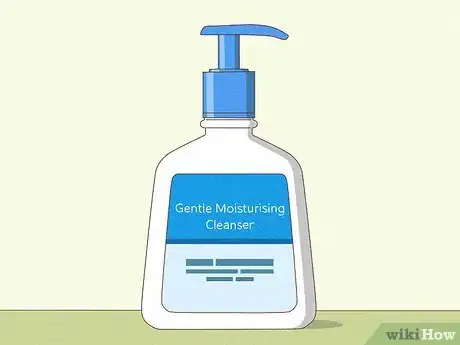

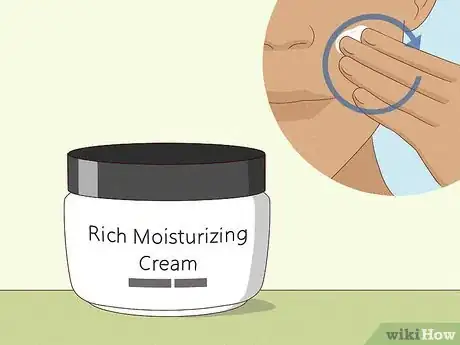


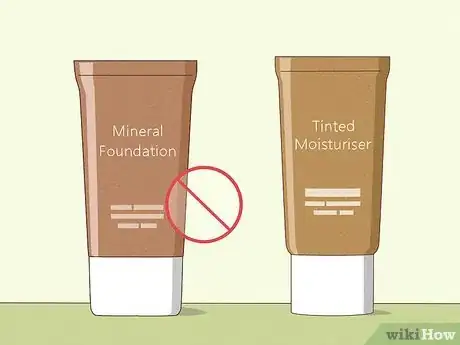
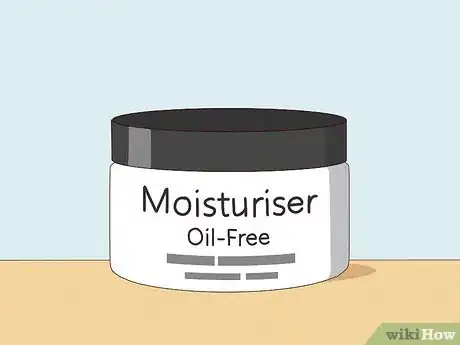
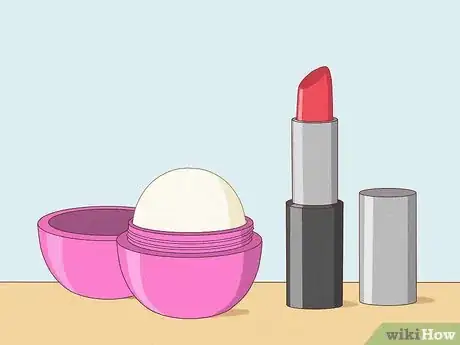


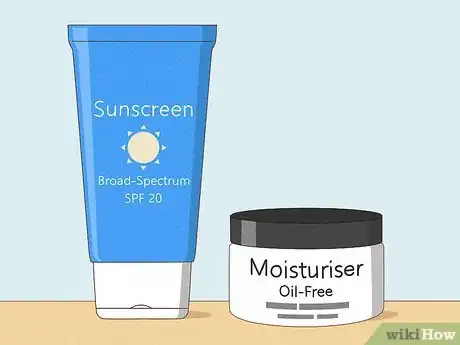


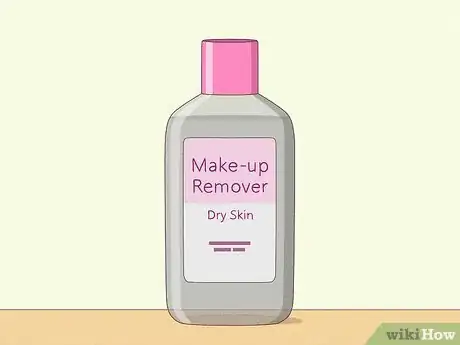
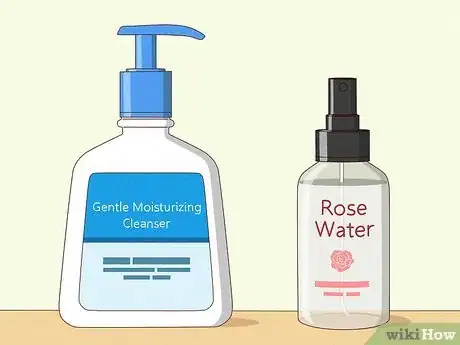


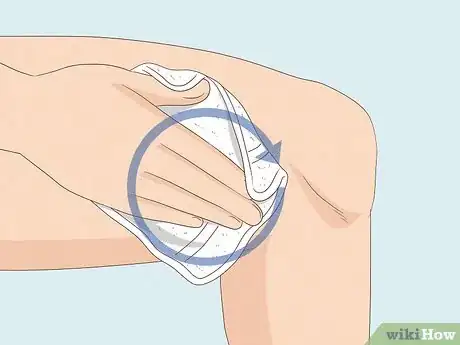










-Step-12-Version-3.webp)




















































